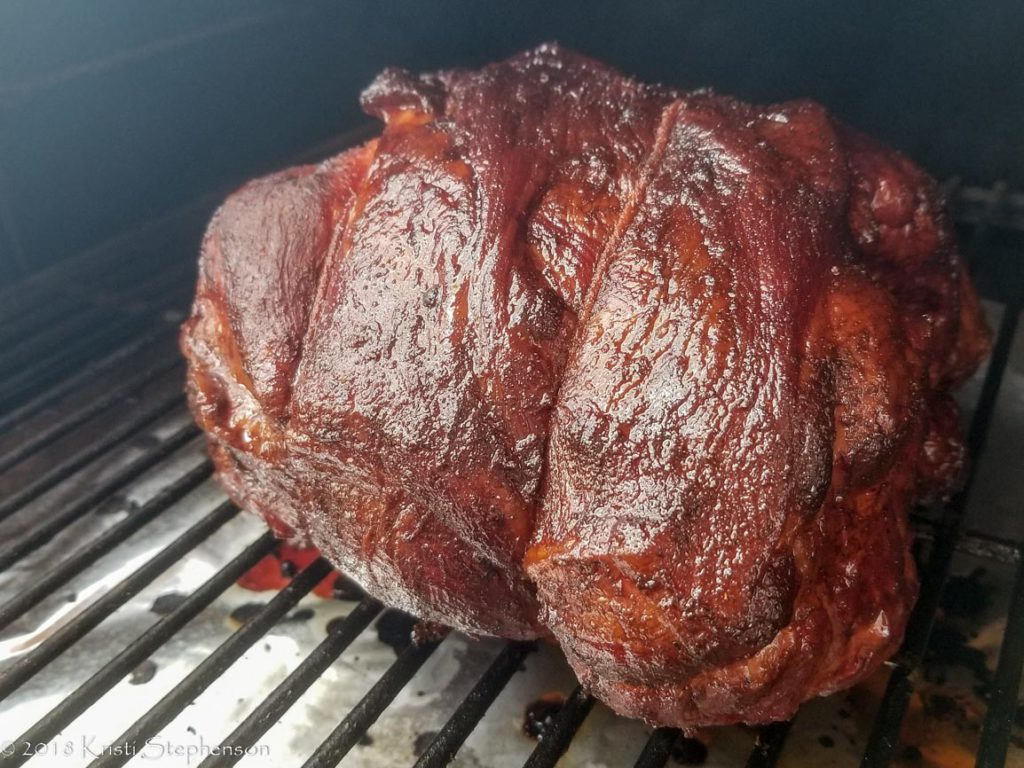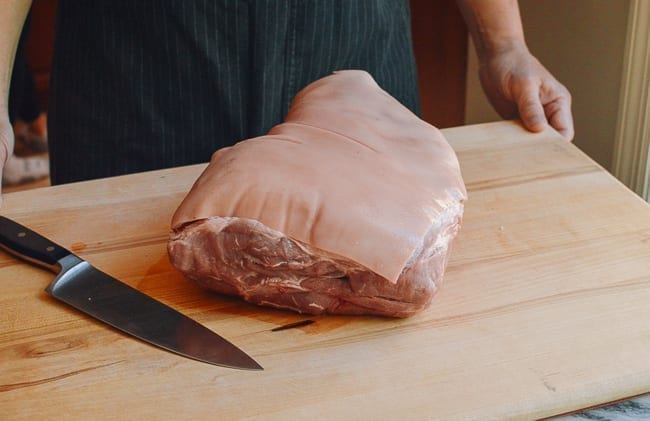

Resting on the counter can allow the pork butt to cool very quickly which can make it more of a challenge to shred. This method will help to prevent the bark from getting chewy and allows the meat the opportunity to begin cooling a little more quickly than when you just leave it wrapped in foil.įinally, you can simply unwrap the roast and place it in a glass baking dish on the counter, uncovered or in the oven set at the lowest temperature This is the best way to maximize the crunchy bark texture, but you'll also want to keep a close eye on your internal temperature. The downside of this method is that the crispy, crunchy, crackly bark you worked so hard to create will suffer and might become soggy from its own juices.Īnother covering method is to unwrap the picnic shoulder, place it in a glass baking dish, and tent the roast with aluminum foil. You can rest your pork butt in the foil that you used for the Texas Crutch and it will work just fine.

This helps to push the meat past the stall point and gets it finished without drying it out. It is common to wrap a pork butt roast in aluminum foil or butcher paper during the last stages of cooking. There are also some differences in the way you cover your pork butt after smoking. There are benefits and drawbacks to both methods. This is another point of contention between pit masters – whether to cover or uncover. That seems to be a good point between too soon and too long for our rests. We've found that the ideal rest time for a pork butt roast that is around six to eight pounds and came out of the smoker at 195-205 degrees is about 45 minutes. That is the temperature range at which some of the most harmful bacteria begin to grow. You never want to let meat (raw or cooked) sit between 40 degrees and 140 degrees. That's because, at this point, the temperature will have dropped down to a level that is approaching the danger zone. The longest you should let a pork butt roast rest is about two hours. You may see as much as a 10-degree rise from when you remove the roast to when you shred it. Keep in mind that the internal temperature of your pork butt will continue to climb as it rests. The minimum time that you should rest a pork butt is about 15 minutes. This is one of those tricky situations where everyone is going to have a different answer and the manner in which you rest your pork butt will also impact how long it takes to rest. How Long To Let Pork Shoulder Rest Before Pulling Both resting and using the Texas Crutch to get your meat through the stall use the science of evaporation to ensure you get excellent cooking results. When you rest a piece of meat after cooking, all you are doing is allowing the internal temperature to drop slightly so that the meat gets a chance to reabsorb the moisture. If you slice into the pork butt right away, the temperature will force the juiciness out of the meat and it will end up all over your cutting board, table, or floor. When you remove the pork butt from the smoker, the surface is very hot and the internal temperature is forcing moisture to the surface. In order to get through the stall, most pitmasters will wrap their pork butt in butcher paper and put it back in the smoker until it hits the proper internal temperature of about 205-degrees. This evaporation is what causes the stall when smoking meat.

As the internal temperature of the meat increases, moisture is pushed to the surface.Īt a certain temperature – usually, about 165 degrees – the surface of the meat will hit the temperature when moisture begins to evaporate. When you are smoking a pork butt roast, the smoker temperature is typically between 225 and 250 degrees, hot enough that the meat will slowly cook but not so hot that it will dry out and shrivel up to nothing. Resting meat after cooking isn't a magical process. Letting Meat Rest After Cooking: How It Works You'll also sacrifice the juiciness that you really need if you are going to be reheating leftover pork butt. While skipping the resting step won't ruin your meat, you also won't get the tender, juicy, delicious results you want. We'll admit, sometimes, the hardest part of the process is having the patience to let the meat rest before we grab our favorite carving knife and get after that delicious smoked pork butt. It also takes patience to let a perfect pork butt rest after smoking. It takes a lot of patience to properly marinade a pork butt roast, and a lot of patience to carefully smoke it low and slow. Let's talk about one of the biggest secret weapons that pitmasters possess – patience.


 0 kommentar(er)
0 kommentar(er)
